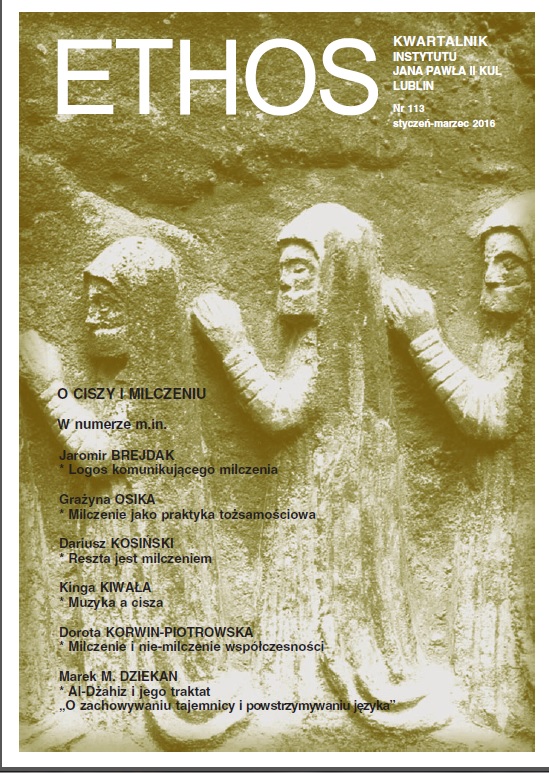Reszta jest milczeniem
The Rest is Silence
Author(s): Dariusz KosińskiSubject(s): Theatre, Dance, Performing Arts, Aesthetics, 19th Century, Sociology of Art
Published by: Katolicki Uniwersytet Lubelski Jana Pawła II - Instytut Jana Pawła II, Wydział Filozofii
Keywords: drama theatre; silence; silent play; modernist drama; Forefathers’ Eve by Adam Mickiewicz;
Summary/Abstract: The article focuses on silence analyzed primarily in the context of Western drama theatre, which is mainly ‘spoken word theatre.’ The first field and the main form in which silence appears in ‘spoken word theatre’ is the so-called ‘silent play’ embracing face expression and gesture. In the course of the evolution of stage acting, they gradually became proofs of the actors’ artistry and creative originality. Developed by masters of the 19th century stage (in Poland, in particular by Alojzy Żółkowski, Jr), the ‘silent play’ became especially important in the modernist drama. Playwrights were using it as the tool to show the ambivalent reactions of their characters or to express deep symbolic meanings. Another aspect of theatrical silence is that connected with death and its figures (such as ghosts, specters, living dead etc.) appearing on the stage. Sometimes (for instance in the Forefathers’ Eve by Adam Mickiewicz) they introduce enveloping silence, a mysterious silence of the unspeakable, to the center of the stage. This silence is no longer ‘the silence of death’ though; rather, it is an entirety encompassing the silence of the audience, and as such it is accessible to human experience. The introduction of this kind of silence onto the stage opens up the possibility of making the stage a philosophical place.
Journal: Ethos. Kwartalnik Instytutu Jana Pawła II KUL
- Issue Year: 29/2016
- Issue No: 1
- Page Range: 49-64
- Page Count: 16
- Language: Polish
- Content File-PDF

